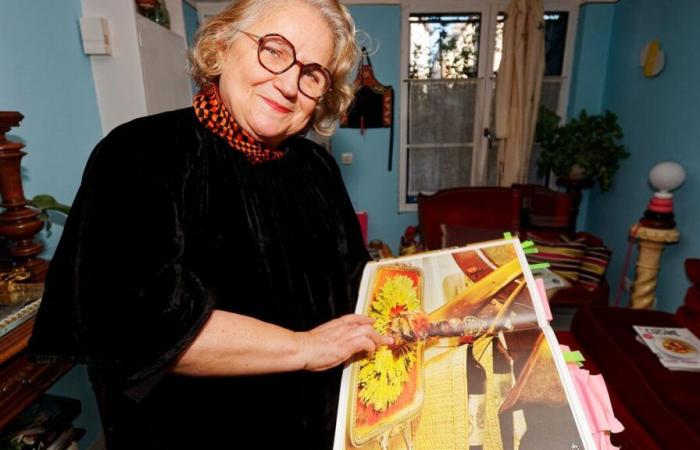
Cooking in the cinema is serious. From the dishes requested by a scathing replica of the character played by Jean Reno in “Les Visiteurs” to those which are prepared in the films and series dedicated to the backstage of restaurants, all tastes can be found on screen. And, even when they are not enjoyed by actors, they can serve as sets just as important as the furniture that surrounds them. Marie Chemorin knows this better than anyone: based in Bernay (Eure), she works as a culinary scenographer. It thus highlights the dishes that we notice, or not, on the sets of major French and international productions.
Originally from Lyon, “which partly explains my relationship with food”, Marie Chemorin was an archaeologist, journalist and author after studying History. Moving to Paris after her thesis, she only “cooked for pleasure. But, although I loved writing, I wasn't happy. So, I wanted to do my CAP in cooking at the Ferrandi school. There, overnight, I was nothing. It was a hard, exciting year where I knew I would never open a restaurant, but that food for me would be a medium. To use cooking to tell something else. So, I started my business. »
It was relationships after an experience in the magazine “Positif” which opened the doors to the world of events, previews, then cinema and series for platforms. From now on, Marie Chemorin is particularly recognized for her expertise in historical meals: “My strength is my imagination. People don't come to me for a pot-au-feu, but for banquets or creations that I propose to directors after much research. I am known for my specialties from periods like the 16th century, the jellies that decorators love for their transparencies,” she explains. “I have a team with me on set each time with chefs to prepare the dishes. Some must know ancient techniques. » She also has assistants who come from the fine arts to make fake dishes which are developed in her laboratory in Brionne (Eure).
After historical productions, a futuristic series?
The works of the culinary artist are all the more sought after today as his filmography is impressive. If she started on short films, she has since worked, among others, on the series HPI, on the two seasons of “The Serpent Queen”, “where my suckling pigs flew in the air”, on the film Emmanuelle by Audrey Diwan, who “asked me for a gourmet Chinese meal that I worked with a young Vietnamese chef and where I invented crazy things”, on the Franco-Canadian series “Versailles”, on the Wes movie Anderson “The French Dispatch” or even on Roland Joffé’s “Vatel”, with its “tons of victuals”.
One of his latest projects is the one that has most marked his career so far: the mini-series on Benjamin Franklin with Michael Douglas in the leading role, broadcast from last April. “With cinematographer Dan Weil, we did some beautiful things like sugar sculptures and lots of lobster pieces. It was so beautiful that they shot a scene to have all the servers parade around to present the dishes to the guests. We worked on it a lot and for a long time to deepen lots of techniques,” she explains.
However, the pace has not slowed down since then, even if two projects that are close to his heart still remain to be realized: “making futuristic series” and, perhaps soon, “launching La Fabrique, a company to create decorative culinary objects for castles, great restaurants, parades or even exhibitions that I would sell or rent.” So many culinary scenographies to see in real life, rather than on screens.





